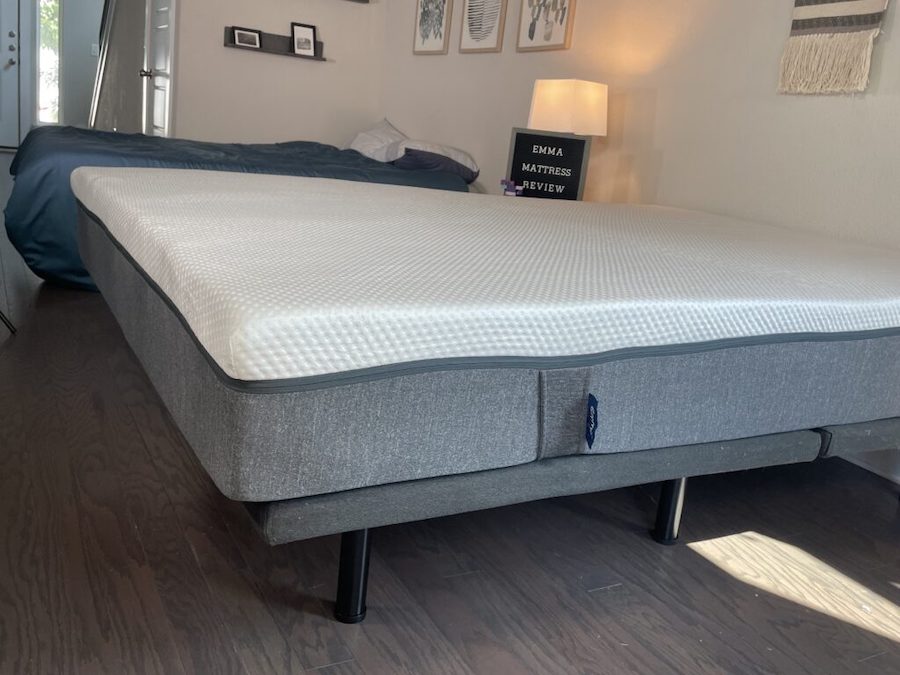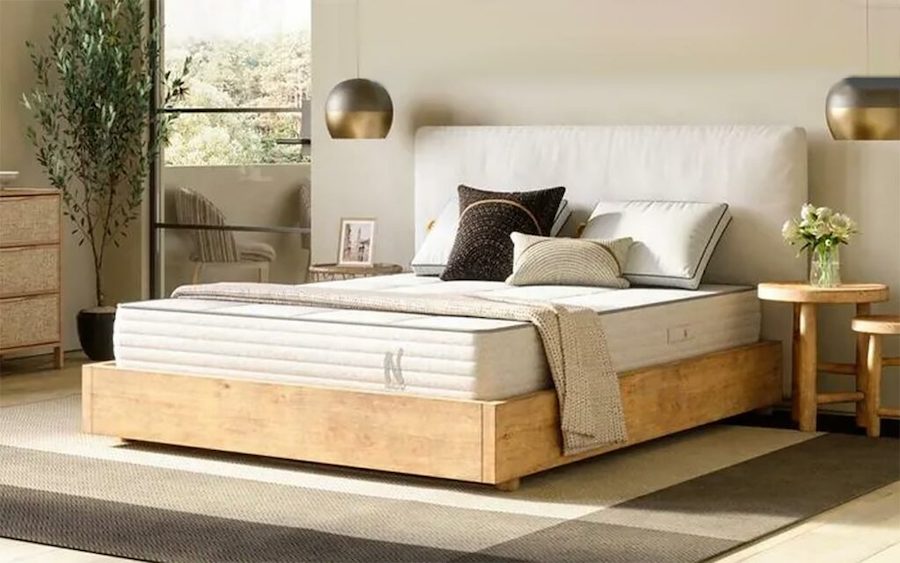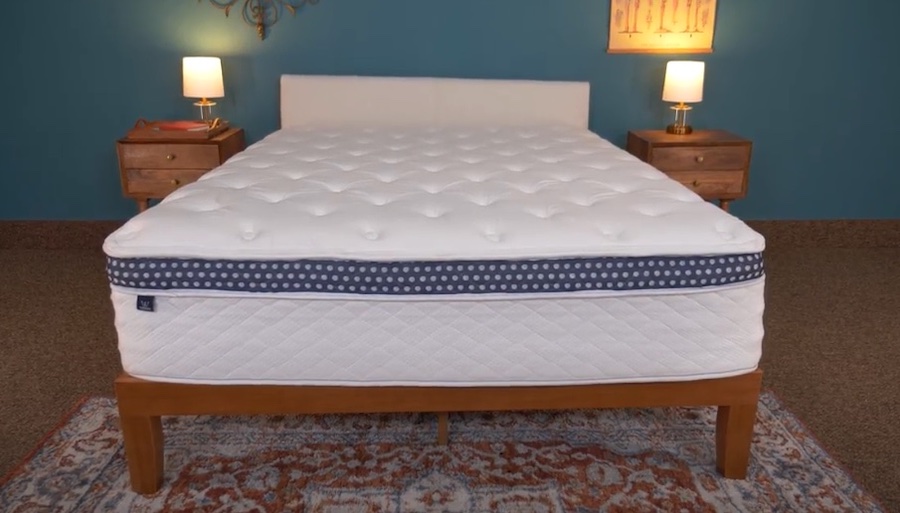Lots of people seem to be wondering about the difference between the single and the twin bed.
It’s obvious that sizing is one of the most important considerations when choosing a mattress, so let’s have a closer look and identify the difference between those two commonly mistaken types.
Single vs. Twin Mattress Comparison Chart
| Twin | Single | |
| Width | 38” | 38” |
| Length | 75” | 75” |
| Price | Least expensive, similar to Single | Least expensive, similar to Twin |
| Best For | Children and teens, solo sleepers, guest rooms, extra-small bedrooms | Children and teens, solo sleepers, guest rooms, extra-small bedrooms |
Best Twin/Single-Size Mattresses
- Helix Midnight Luxe – Best Cooling Twin Mattress
- Emma Original – Best Twin Mattress for Pressure Relief
- Nolah Natural – Best Hypoallergenic Twin Mattress
- WinkBed – Best Firm Twin Mattress
- Bear – Best Twin Mattress for Back Pain
Check out our full list of the best Twin mattresses

|

|

|

|

|
|
| Helix Midnight Luxe Mattress | Emma Mattress | Nolah Natural Mattress | WinkBed Mattress | Bear Mattress | |
| Rating | |||||
| Firmness | Soft: 6/10 | Soft: 5/10 | Soft: 6/10 | Multiple firmness options | Medium-firm: 6.5/10 |
| Material | Hybrid | Foam | Latex | Hybrid | Foam |
| Cooling | — |
|
|
|
|
| Warranty | 15-year warranty | 10-year warranty | Lifetime warranty | Lifetime warranty | Lifetime warranty |
| Shipping | Free shipping | Free shipping | Free shipping | Free shipping | Free shipping |
| Trial Period | 100 nights | 365 nights | 120 Nights | 120 nights | 120 nights |
| Best For | Back Sleepers, Stomach Sleepers, Side Sleepers | Hot Sleepers, Kids, Back Sleepers | Side Sleepers, Back Sleepers, Stomach Sleepers, Hot Sleepers, Back Pain | Back Sleepers, Stomach Sleepers, Back Pain, Hot Sleepers, Side Sleepers | Hot Sleepers, Back Sleepers, Side Sleepers |
Are Twin and Single Mattresses the Same Size?
Yes, Twin and Single mattresses are the same, size-wise. However, it’s their original intended uses that differ.
A Single bed is 38 inches wide and 75 inches long. Its main designation is to fit one person, which is where the name “Single bed” stems from. These are comfortable and convenient for kids’ rooms and are likely going to be suited for children until they reach high school age, which is when a Twin bed may no longer be long enough to accommodate their height, though this will depend on the particular teen.
As mentioned above, a Twin is identical to a Single in terms of sizing. However, it was originally intended to be one of a pair of Single beds. They are usually put in guest rooms which would be shared by more than just one person. They are also commonly chosen by couples who prefer to sleep together but not to share their bed as they don’t feel comfortable.
It’s also important to note that there are a few different variations of the Twin-size bed, including the Twin XL.
View Our Full Comparison: Twin vs. Twin XL Mattresses

Who Should Own a Single Bed?
A Single bed is usually placed in a kid’s room. They are also perfect for hotel rooms designed to sleep three people. These are the so-called “triple” rooms and are very characteristic of low-budget hotels and motels.
Additionally, Single-size mattresses are preferred if you have a smaller guest room and can’t afford to place a larger mattress in there.
Who Should Own a Twin Bed?
Twin beds were originally designed to go in matching pairs, as we already explained above. The most common application for them is the regular double room in a hotel. A lot of hotels use this instead of a King-size to accommodate the versatile demands of single clients and those who are a couple.
Additionally, a Twin mattress, as we mentioned above, is preferred for rooms that have to be shared by siblings, for example.
It’s important to note, though, that “Twin” is now the more commonly used name to represent the Single-size bed. This means you can use a Twin bed as you would a Single.
Need more info? Check out our Twin-size mattresses guide here.
What to Consider When Choosing a Twin or Single Mattress
Dimensions
Twin and Single mattresses are the smallest conventional beds that you can buy. Their size makes them great for children and guest rooms. These beds will come in at approximately 38 inches wide by 75 inches long, and that should allow most average-size adults to sleep comfortably in a Twin or Single bed. However, those who are 6 feet tall or more may want to consider a Twin XL or a Queen. Also, heavyweight sleepers should check that the mattress has enough weight capacity to support them.
Price
Twin mattresses are typically the least expensive size. The smaller size means that fewer materials are needed, which helps keep costs down. This makes them a great choice for solo sleepers who are trying to save money. Their cheaper price also lends to them being a good fit for guest rooms.
Furthermore, going with a smaller size may mean you can afford a better-quality bed or one made with luxury materials. If you are interested in a high-end or organic mattress but are afraid that it is out of your price range, going with a Single/Twin size may allow you to bring home the bed you desire.
Comfort
Although Single and Twin mattresses are smaller than other options, this doesn’t mean they are uncomfortable. Manufacturers that offer Twin beds (most of them do), put the same materials and craftsmanship into their smallest model as they do all the other sizes.
A bed that you find comfortable is largely dependent on your personal preferences. However, you should also take your body weight and preferred sleeping position into account as these can affect what type of mattress will work best for you.
Bedding
Bedding is an excellent way to add comfort and personal style to your bed. Twin or Single beds are an in-demand size, and this means that a variety of accessories should be easy to find. Twin accessories are also more affordable than other-size bedding.
Twin beds are often used in children’s rooms and there are a host of available options that should be appealing to kids. Also, you should keep in mind that dorm rooms are often furnished with Twin XL beds to accommodate taller students. If you are buying bedding for a college student, make sure that you check this as standard Twin bedding will not fit this correctly.
Room Size
Twin beds aren’t typically used in master bedrooms. These rooms are usually around 12 feet by 14 feet or 12 feet by 16 feet, and the size of a Twin bed may look small and out of place in this big of a space. For master bedrooms, you may want to consider a Queen-size bed as they usually provide a great balance when it comes to bed and room dimensions.
However, Twin beds can make a good choice for other bedrooms that are around 10 feet by 10 feet. Singles would provide more space for additional furniture in these rooms, and if you have a guest room that is smaller than average, Twin beds are a great choice because they won’t be overwhelming.
Twin and Single-Size Mattress Pros and Cons
Twin/Single-Size Mattress Pros
- Cheaper option
- Accessories are less expensive and easy to find
- Take up less space, making them a great choice for small rooms
Twin/Single-Size Mattress Cons
- They can only hold one person
- May have a smaller weight capacity
- These beds may not be long enough for people over 6 feet tall
FAQs About Single vs. Twin Mattresses
Is there a size difference between a Twin bed and a Single bed?
No, Twin beds and Single beds have the same dimensions, which are typically 38 inches wide by 75 inches long. When it comes to these mattresses, the only difference is that some people call them Twins and others refer to them as Singles.
Is a Twin size good for one person?
Yes, Twin-size beds can be a good option for one person. These beds should give children and most average-size adults enough room to reposition through the night while remaining comfortable. However, those who are over 6 feet tall or who weigh more than 230 pounds may want to get a larger size.
Why is a Single called a Twin?
Twin beds were originally intended to be a pair of Single beds, often in places like hotels as an alternative to King or Queen beds. It seems that over time, the name “Twin” stuck more within the mattress market and is now the more commonly used title for this mattress size. Additionally, some Twin beds may be sold in pairs, but single options are commonplace now.
Conclusion
There is no difference in the Single and Twin measurements, but the original purposes of both beds were slightly different. Twin beds were originally considered part of a pair of Single beds. However, the term “Twin” is more often used to describe Single-size mattresses measuring 38 inches by 75 inches.
Twin/Single mattresses are ideal for children, solo sleepers, and guest rooms. Their smaller size also means they’re a budget-friendly option, costing the least of all the standard mattress sizes.

Jill Zwarensteyn
Editor
About Author
Jill Zwarensteyn is the Editor for Sleep Advisor and a Certified Sleep Science Coach. She is enthusiastic about providing helpful and engaging information on all things sleep and wellness.
Combination Sleeper